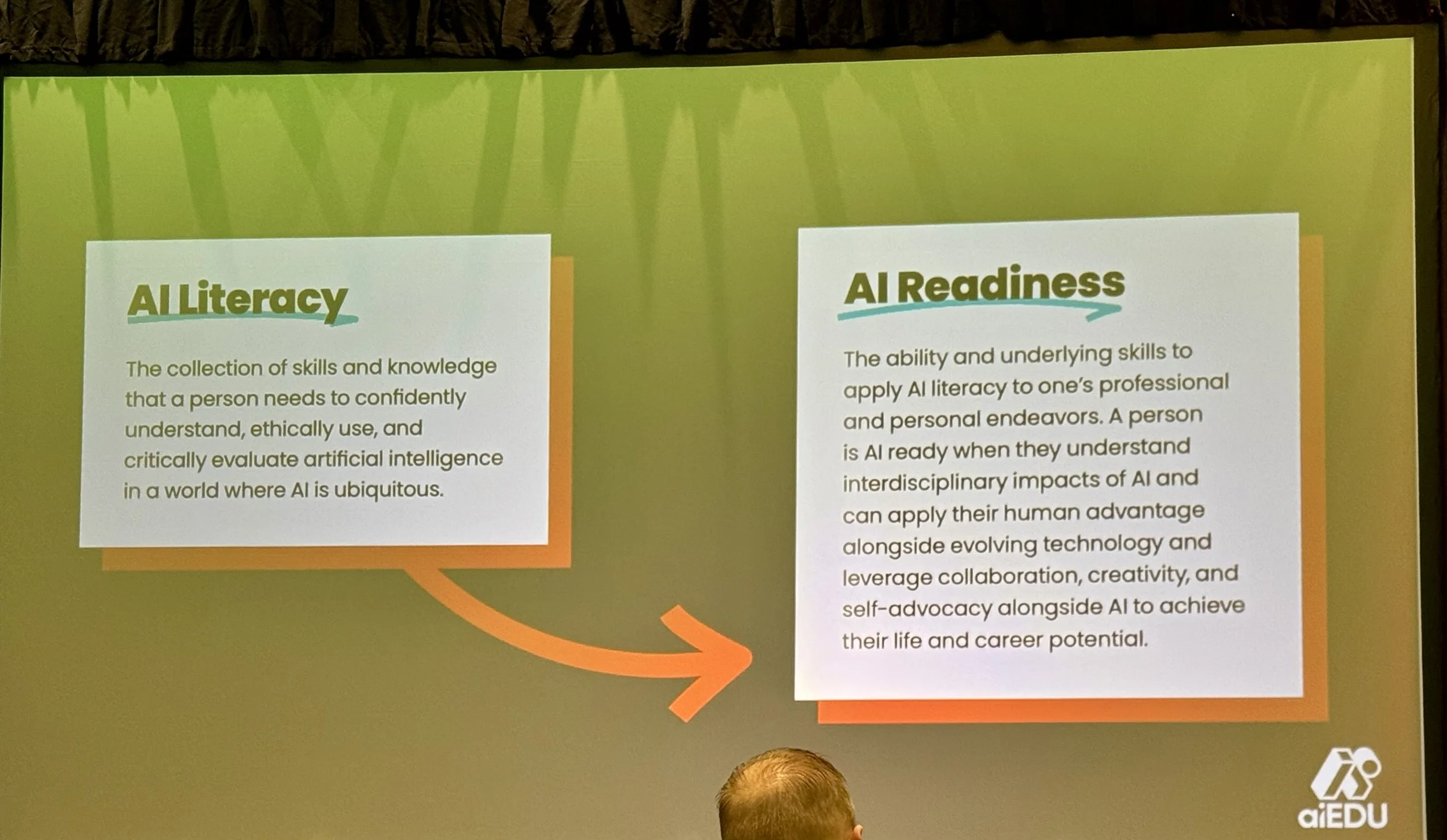K12 AI Deeper Learning Summit Takeaways 🤯
3 days at the AI K12 Deeper Learning Summit in Anaheim, California, and I am truly inspired. So many conversations and innovations have been fueled since the emergence and light-speed adoption of ChatGPT. Here are my takeaways. If you attended, what were yours? If you did not attend, what questions do you have?
While we are still only at the tip of the iceberg when it comes to harnessing the power of generative AI to shape teaching and learning, many schools, districts, and companies have made great inroads in leveraging this power.
Check out the aiEDU AI Readiness framework. There are many conversations about AI Literacy, but aiEDU takes the conversation further by addressing AI Readiness. The Framework includes knowledge, skills, and competencies needed by students and teachers, as well as a rubric that can be used by districts to prepare schools to use AI. I know that my team and I will be digging into this framework in the coming weeks to help our district move forward in the thoughtful implementation of AI strategies and tools. It's easy to focus on the shiny button, but we need to make sure that anything we implement is equitable, sustainable, and beneficial from a pedagogical standpoint. We also need to look at the implementation of AI tools from a systems point of view. Does this tool integrate into our existing systems and protect student data privacy, and how can it be scaled so that all students and staff benefit? This includes a plan for professional development. Finally, how can we scale the impact on teaching and learning without sacrificing the teacher-student relationship?
With the shutdown of schools in 2020 and the shift to online learning, many of us in the edtech space thought that this catastrophic event would finally be the catalyst to shift teaching and learning into the modern era. Unfortunately, while we saw some innovation, many teachers and systems shifted right back into old habits once we returned to in-person learning. Others made some shifts, but they were shifts more in the area of tool usage, not really in instructional practices. Using annotation software to complete a worksheet online is NOT innovative.
But now there is hope! The rapid infiltration of generative AI into our lives has made the status quo impossible to maintain. The shift is happening. The conversations at conferences like the AI K12 Deeper Learning Summit help industry leaders, district leaders, and classroom teachers alike share ideas, perspectives, and journeys. Together, we can change the face of education, creating more meaningful and relevant experiences for our students.
My call to action came from a conversation with a student at the conference. Another educator and I were clicking through some of the current generative AI tools available on the market and sharing experiences and insights. The student sitting with us is part of the F.A.N.S.I. student ambassador program through the Orange County Department of Education. F.A.N.S.I. stands for Forward AI Network of Student Innovators. These are students who are using AI to create a project, innovation, or entrepreneurial endeavor. But this student said that everything he is doing with AI (and it was a lot!) was all on his own time and initiative. He said teachers at his high school are not even talking about AI, and he had never even seen the applications or use cases we were discussing. There is a big disconnect between his in-school experiences and what he is learning on his own when it comes to generative AI. Now, I'm not saying all students should be using the new shiny apps, but we need to have the conversations because if we do not help facilitate these conversations, students will go elsewhere to learn what they need to know.
Andrea Earl with Robyn McNair, & Linda Palomino. Several other members from our team also attended. Can’t wait to get back to work and debrief!
Check out the aiEDU AI Readiness Framework
Orange County AI Forward members took time to catch up!


